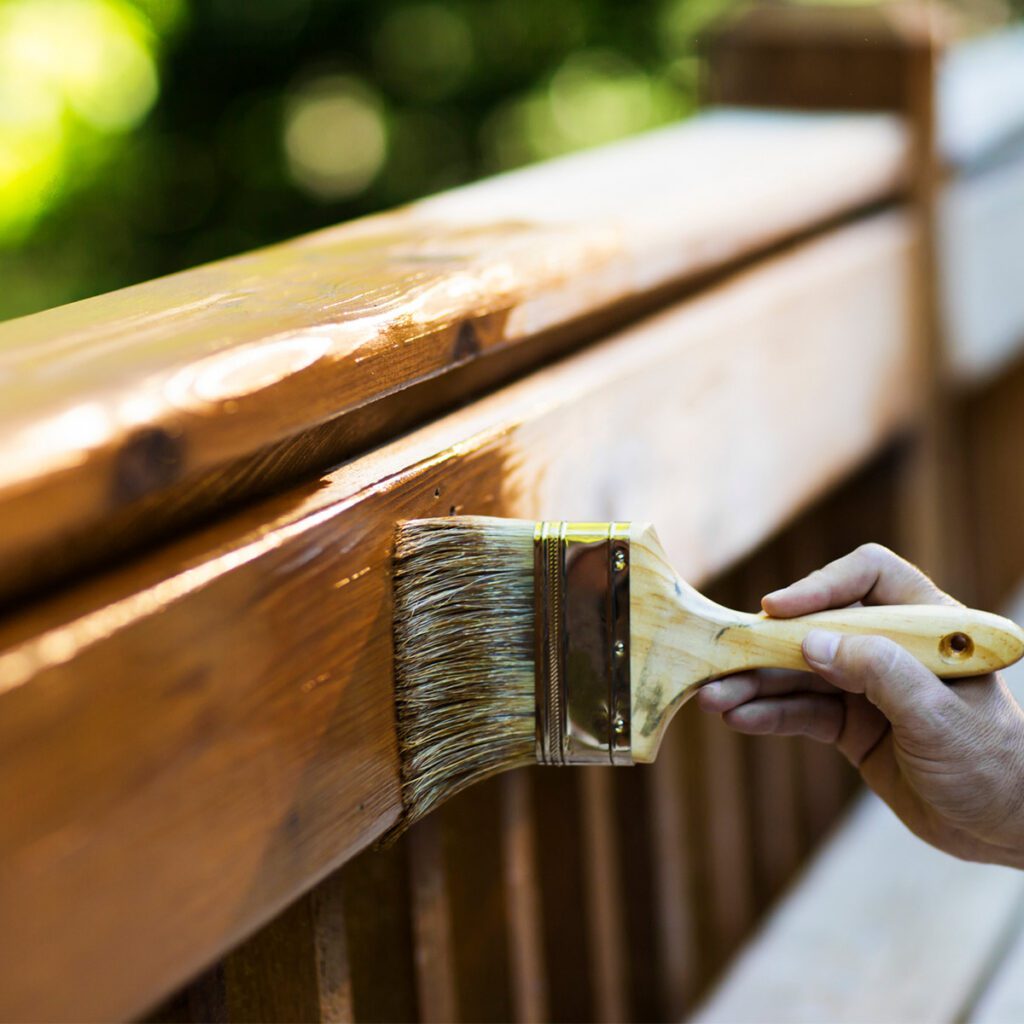Against the Grain
Whether you’re looking to add more skills to your decorating arsenal or you’re setting out on your first furniture flip, understanding the different wood stains can be a little overwhelming. We’re here to help! Read on for a basic guide about when – and when not to – use some of the most popular types of wood stains.
Oil-Based
This is one of the most popular finishes and is a great choice if you’re looking for something durable that will penetrate wood. Oil-based stains are typically made from varnish, linseed oil, and petroleum distillate (aka paint thinner) and will take several hours for each coat to dry. Although the dry time is longer, that means more time to fix mistakes so this is a beginner favorite! Just make sure to use this product in a well-ventilated area away from any open flames.
Water-Based


These products are similar to oil-based stains, but swap the oil for, you guessed it, water. Another major pro of water-based stains is that they have less of an odor than their oil-based counterparts. If you’re hoping to still see the beautiful and unique wood grains when you’re done with your project or want a slightly more eco-friendly option, this might be your best bet.
Gel-Based
Loved for its versatility, gel-based stains are thicker in nature but are sure to get the job done. They are similar to paint in their application, and their heaviness means they are a little more predictable than other wood stains on the market. These products are great for types of wood prone to blotching such as pine, but be cautioned that the cleanup will be more involved and will often require paint thinner.
Lacquer
Lacquer is a surface finish that is most often applied as a transparent layer for durable protection. That being said, there are some tinted versions out there that can give a similar effect as other stains. These products can dry in as quickly as 15 minutes, so while fast, the margin for error is small.
Water-Soluble Dye
For those willing to put in a little added work, water-soluble dye can be a great option. These powdered staining products just need a bit of water and then you have a rich and vibrant dye that will penetrate deep while still showing of the wood grain. These stains, however, are more sensitive to light and will be less durable in the long run.
Metalized Dye
Yet another versatile option is metalized or metal-complex dye. Available in liquid and concentrated forms, these products are typically combined with thinners, alcohol, or water to achieve varying effects. Metalized dyes dry fast, and using a sprayer will give you the most even application.

